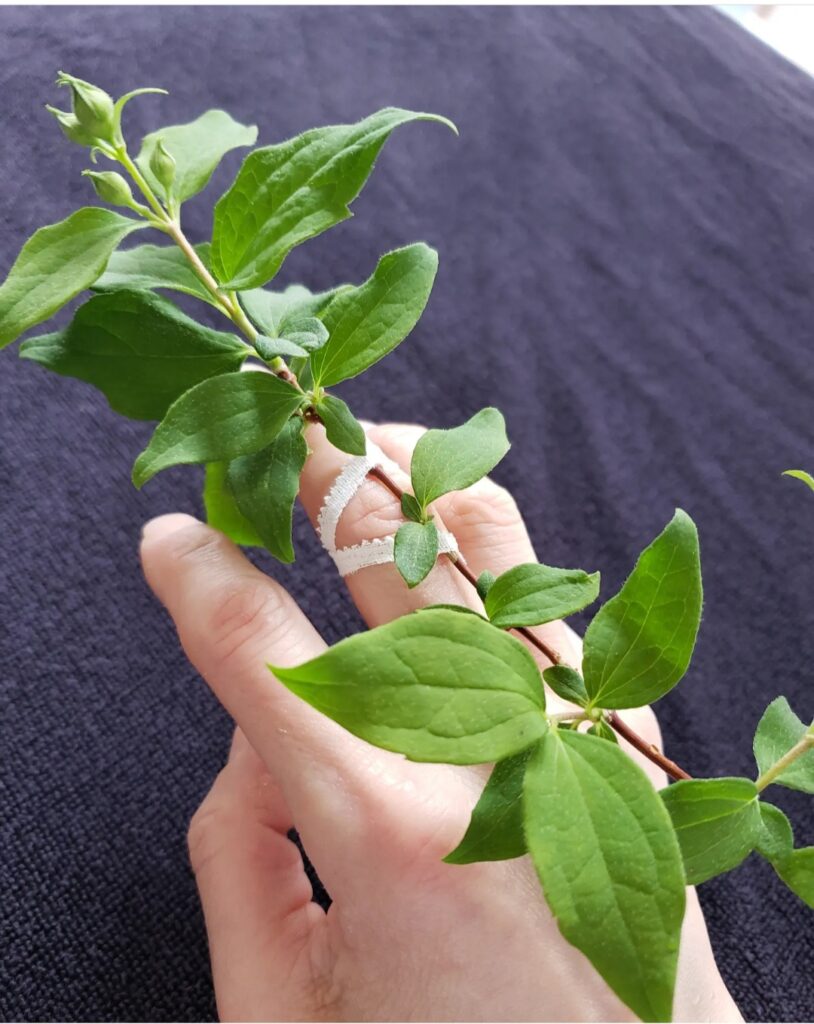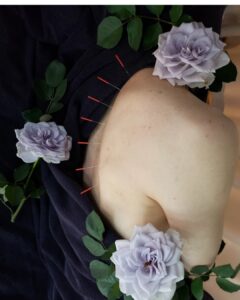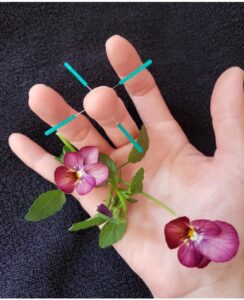ブシャール結節
Bouchard's node
ブシャール結節とは、指の第二関節(PIP関節)の軟骨が摩耗することで、関節の変形、腫れ、屈曲などが起こる症状です。症状はや痛みの具合は、様々です。必ず生じるものではなく、中には、見た目だけで症状がない人もいます。似た症状で、ヘバーデン結節がありますが、こちらは第二関節ではなく、第一関節での症状とんります。ブシャール結節、へバーデン結節ともに、指の変形性関節症に分類されます。ブシャール結節は、更年期にさしかかる、40代以上の女性に多く見られます。へバーデン結節は、指の第一関節(DIP関節)の軟骨が摩耗することで、関節の変形、腫れ、屈曲などの症状がでます。ブシャール結節と同様、指の変形性関節症に分類されます。指の第二関節の腫れ、痛み、こわばりなどの症状を伴い、変形が進行すると、関節を動かすことが難しくなります。指の関節に、水が溜まってしまうケースもあります。ティーカップが持てなかったり、箸が使いにくくなったりと、日常生活に支障をきたすような症状が現れることもあります。ブシャール結節の原因は、遺伝、加齢、更年期・妊娠・出産時のホルモンバランスの乱れ、手先の使いすぎなどが原因ではないかと言われていますが、原因の解明には至っていません。今症例では、関節にかかる負荷を軽減するため、テーピングで患部を固定し、安静を保つことで、痛みを多少でも抑えられるようにと考えて、テーピングを施しています。
Bouchard's knot is a condition in which the cartilage in the second joint of the finger (PIP joint) wears down, causing deformity, swelling, and flexion of the joint. Symptoms and pain can vary. It does not always occur, and some people may have no symptoms other than appearance. A similar condition is Heberden's node, but it occurs in the first joint, not the second joint. Both Bouchard's and Heberden's nodes are classified as osteoarthritis of the fingers. Bouchard's nodes are more common in women in their 40s and older who are approaching menopause. Heberden's nodes are caused by wear and tear of the cartilage in the first joint of the finger (DIP joint), resulting in joint deformity, swelling, and bending. Like Bouchard's nodes, it is classified as an osteoarthritis of the fingers. It is accompanied by symptoms such as swelling, pain, and stiffness in the second joint of the finger, and as the deformity progresses, it becomes difficult to move the joint. In some cases, the joints of the fingers become filled with water. Symptoms that interfere with daily life may appear, such as difficulty in holding a teacup or using chopsticks. The cause of Bouchard's nodes is said to be due to heredity, aging, hormonal imbalances during menopause, pregnancy, and childbirth, and overuse of the fingers, but the cause has not been elucidated. In the present case, the affected area is taped in order to reduce the load on the joint and to keep it at rest, in the hope that it will reduce the pain somewhat.



